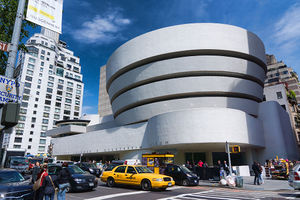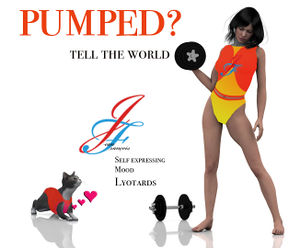Postmodernism
This page is currently under deconstruction This page contains too many great, white, heterosexual males and not enough anti-racist mathematics. Do not edit this page if you take the positivst, materailist view that reality is objective, which is to say that it exists, "out there", independent of the human observer, and of the observer's intentions and observations, or generally have no idea what postmodernists are talking about. P.S. Alan Sokal is forever banned from editing this page, you sir, have been warned. |
“What is postmodernism? Beats me — I died in 1900.”
– Oscar Wilde on Postmodernism
Postmodernism was a dramatic modernisation of the postal service in France in the late 1950s and early 1960s. It consisted of several crucial technological reforms which allowed postal workers to deliver letters and parcels to larger numbers of people within shorter periods of time. The reforms also resulted in mass retrenchment, leaving former workers dissatisfied and irate. They formed a circle of postal workers including Derrida, Barthes, Foucalt and Ovid, who wrote a series of pamphlets demanding that their jobs be reinstated. These pamphlets have since then been commonly misinterpreted as theoretical and philosophical works of criticism and linguistics.
Postmodernism, as distinguished from postmodernism by the lack of bold face or italics (and also referred to as "post-modernism" and even "postmodern-ism") is a philosophy which does nothing but reinterpret postmodernism. If a postmodernist suggested something original, she would cease to be postmodernist and become the subject of endless postmodern reinterpretations. Postmodernists choose to not be set apart by special type styles because such a gesture would signify a special status within the hierarchy of theories, which would elevate one version over another.
Origins of Postmodernism[edit | edit source]
To understand postmodernism you need to understand modernism, which is difficult enough. Modernism is derived from two Latin words modo, which means "new," and moron which means "ignorant" or "dim." Hence the meaning "new dumb thing."
Since the newest dumb thing happens right now, then postmodernism, which means "to follow the new dumb thing," means postmodernism is about the future. But since we can only speculate about the future, postmodernism is concerned with the nowness of the now, or at least the many acceptable ways in which we might come to understand it.
In fact, many aspiring postmodernists find the mazes of postmodernism so difficult to navigate that they abandon the discipline entirely and take up the study of something relatively easy, such as Cosmological Astrophysics. Or Zen.
Historical roots of Postmodernism[edit | edit source]
Many people mistakenly believe Postmodernism was first recognized by French Philosopher Jean François Lyotard. This is due to historical confusion and the desire to enhance Postmodernism's scholarly credentials. In fact, Postmodernism is believed to have followed the introduction of French designer Jean François' one-size-fits-all dayglo Self-Expressing Mood Leotard that changed colors based on the wearer's emotional state. Because American marketing team thought the word "leotard" didn't sound French enough, the product was released as "Self-Expressing Mood Lyotard."
As might be expected, Postmodernism was not very well received in America and Great Britain, who think anything French makes people fat, lazy and Gay. Except for their pomme frittes, which were reinvented as French Fries and became the archetypal postmodern food. As a consequence, postmodern Anglos have already become fat and lazy.
As studied today[edit | edit source]
Postmodernism provides budding high-school philosophers with enough random philosophical material to spew for several years straight. Postmodernists often like to label many forms as "Po-mo", giving rise to terms such as "po-mo literature", "po-mo art" and "po-mo erotica", not to be confused with homo-erotica.
People find postmodernist novels fragmented and difficult to follow because humanity has not developed to the proper level of understanding. Or, possibly, the novels themselves have not fully matured yet. Some critics even theorize that postmodernist books will in fact never become popular, because the future is always tomorrow, although there are those who argue that the future was in fact last Thursday, and that the critics weren't paying attention and so missed it entirely.
It has been noted that, when played at the same time as "Dark Side Of The Moon" by Pink Floyd, or "Man On the Moon" by Kid Cudi, postmodernism syncs up eerily. Recently postmodernism has fallen out of favor with authors, because they like to eat.
Key figures[edit | edit source]
- Michel Foucault: Foucualt is best known for his critical studies of shopping trolleys, noting how they exert subtle power networks on their owners. In "The history of shopping trolley wheel Greece" he controversially makes a direct comparison between shopping trolleys and Adolf Hitler. "Hitler was Mort in the Greek sense of the word. Greeks bathe in olive oil and so are greased. Grease rhymes with peace and peace didn't happen when world war two broke out. Adolf hitler rhymes with the greek: trollos which means a shopping trolley. Yeah... " Naturally, Foucault became a guru to your local college professor.
- Jacques Derrida: Derrida tried to deconstruct himself through his books, most of which were written on stapled together toilet paper. In his most famous critique of himself "Of me", Derrida writes: "I am not in the greek sense of the word an Ego. I differ from ego to become a sponge. Ironically, I am not a sponge." 1978 began his "deconstructive acts" period. These were performance pieces in which Derrida stabbed himself whenever he spoke. This caused outrage with the public and footage showing them gagging at the sight were later edited down to their individual pixels and reformed into a picture of Derrida editing them down to their individual pixels. His final act was cutting himself open to reveal that inside him lay a TV.
- You: You are a changing external being and you are not you, so you cannot be something else but, ironically you can. So, yes... you are a key figure. We're all key figures. But ironically not.
However, the actual Foucault and Derrida (and even you) were not postmodernists. The postmodern Foucault and Derrida were personas suggested by their texts as interpreted by you and endless other yous and reinterpreted constantly through college lectures, emails and endless internet blogs, even those posted by mindless internet robots.
Postmodernist theories[edit | edit source]
While no one is actually sure what postmodernism is, several different theories have been kicked around:
- Postmodernism is a theory wrapped in an explanation surrounded by speculation inspired by confusion.
- Postmodernism is a theory that means exactly what you think it means until you change your mind.
- If postmodernists could reach consensus they wouldn't be postmodernists.
- Postmodernism was over before anyone knew it arrived.
- You will never find enough postmodernists to change a lightbulb because they will never be sure which lightbulb to change.
Postmodernism can be illustrated by the following postmodern statement: The idea of a French Fry has no perceivable value until you can mass produce and sell it, but the experience of eating a french fry will mean something different to different diners and cultures. (Thus, in French culture, the pomme fritte accompanies a meal and a bottle of wine. To an American, a french fry is something to pig out on with cheese and chili until you change several pant sizes.)
Main arguments of postmodernists[edit | edit source]
- There is no unity, even the unity of chaos is not.
- All values are relative, but racism and sexism are really bad.
- There is no individual: I should never describe myself as 'I'.
- Capitalism is evil, but it's unfair that some people have more wealth than others.
- There is a sole representative of absolute truth and unity of knowledge: the30-foot singing penis sculpture at the art gallery downtown from which pure wisdom flows uninterrupted.
- Western Enlightenment progress is an illusion; therefore, we should abolish capitalism and tax the rich.
- Capitalism sucks.
- The only way to truly understand humanity and collective action is by first understanding that it is not uniform. Second, one must continue with that rather pedestrian understanding by figuring in the complex nexus of power-engendering forms of Foucauldian genealogies coupled with a discursive shift of the modular nation-state qua sexual-(inter)sexual form inherent to the (post)-hegemonic fabric of the intrinsic, and rather self-evident, tears within the Bourdieuian poly-habititic stream (organically) in(ter)connected within the aluminum foil of a 7-Eleven burrito that is the most readily apparent, nay, the only prism of belonging within the post-global antimodern dromospheric gauntlet. Third, a swift punch to the groin is life-affirming (whether given or received).
- Capitalism is no good ... have we mentioned this fact?
- A text has no logic following of words. the had tree banana word sex cunt joepiedepoepie!
- All truths are constructed and have to be abolished. I will abolish the rule that all truths are constructed and have to be abolished. It is a lousy, stupid truth. Talk to the hand, cocksucking truth!
Interview with a postmodernist[edit | edit source]
- Q: Why did you write this book?
- A: That wasn't me. I am changed now. I have different views. It was another moment.
- Q: You did write it. It has your name on it.
- A: And what is a name? A collection of ink stains on processed tree bark?
- Q: No, I think it's a...
- A: a (article) - Not any particular or certain one of a class or group. Dictionary.com.
- Q: Pardon?
- A: This interview is not about Nanny McPhee. It's not about fire hydrants or scallion pancakes. This interview is over. Do you want to ask any questions? The interview has just begun.
Examples of Postmodernism[edit | edit source]
Postmodernism in practice[edit | edit source]
Perhaps the best way to understand postmodernism is not to try to grasp a unifying principle (which wouldn't exist even if postmodernists intended it, which they vehemently deny), but to see how it is practiced in different fields of thought.
Postmodern art[edit | edit source]

The drawing line between modernist and postmodernist art isn't as clear as might be expected. In fact, many scholars believe they can trace four distinct stages in the development of post-modern art:
- Modernist art: A Jackson Pollock painting. The painting expresses the interplay of elements rather than anything meaningful, but, believe it or not, your three-year-old couldn't begin to paint one.
- Pre-post modern: Several lithographs of the same Jackson Pollock Painting on display.
- Post modern: The lithographs are removed and only the hangers remain on display as an "installation."
- Neo post modern: Tickets for the exhibit would be considered part of the installation.
- Post post modern: No installation, just printed tickets, each one sold as an object of art.
Postmodern philosophy[edit | edit source]
The ground breaking moment in modern philosophy is considered to be Descartes: I think therefore I am.
The same moment in postmodern philosophy would be rendered as : "'I think I am,' therefore either creating a cognitive structure corresponding to the phrase, 'I think therefore I am,'" or "my mind created a narrative in which my ability to think proved the reality of the act of thinking," or "a collective of minds agree that the ability to connect thinking to the perceived reality of existence to such an extent that a philosophical treatise connecting thinking to existence could be successfully marketed as a legitimate act of philosophy," or else "the act of thinking that thinking proves existence created an opportunity to market a book called 'Thinking for Dummies.'"

Postmodern architecture[edit | edit source]
Modern architecture would be a boxy glass structure capable of projecting the identity of the corporation it houses.
Postmodernist architecture would be a) created from local materials, erected sustainably and branded to be recognizable worldwide (the best examples evoking multiple cultural references while being offensive to none), or b) a MacDonalds.
Postmodern Religion[edit | edit source]
Modern religion would suggest a divine being perceived in multiple geometries who transcends material concerns without denying the authenticity of the sects who worship him. God is unknowable but describable.
Postmodern religion is basically a series of observations about the perception of the divine exchanged in a free market dialogue that changes with each new revelation, conjecture or observation. For that matter, God changes each time we think about shim.
If the place of worship just happens to offer a coffee bar with Starbucks coffee, the worshipper can experience a true postmodern epiphany.
Postmodern Mathematics1[edit | edit source]
In modern math 2x2=4.
Notice that the descender on the numeral 4 is representative of a penis, as is the right lower extension on the 2. Furthermore, the clearly masculine 4 is of greater value than the more ambiguous 2. This suggests that modern math retains the masculine hierarchical constructs of older traditions.
In postmodern math 2x2 = {(2b)100, (3b)11, (4b)10, (aboriginal) many2...}.
In this expression the digits 1 and 4 continue to express masculine qualities, but the 0 represents a vagina and the 3 represents female breasts. In addition, the upper whorl on the 2 can now be appropriately interpreted as female breasts making 2 a transgender representation. The concept "many" in aboriginal thinking also transcends the male 1, female 0 and transgender 2 which are the only other numbers in aboriginal mathematics. Thus, postmodernist mathematical interpretation breaks free of gender bias in earlier, male dominated mathematics.
Postmodern comedy[edit | edit source]
Modern comedy is built around a dyad structure of set-up and surprise (punchline).
Postmodern comedy evolves from a casual observation followed by an exchange of witticisms, followed by ironic meta-witticisms linking the witticisms to the nature of the comedic enterprise. If laughter does not ensue, all parties assume the others lack a sense of humor.
Postmodern television[edit | edit source]
To understand postmodern television, we can look at representative situation comedies from different eras:
- Classic TV, Father Knows Best: Family bonds around strong father figure and loving mother in traditional American house who guide their children into adulthood by teaching them strong decisions between right and wrong.
- Modernist TV, The Dick Van Dyke Show: Madison Avenue dad is frequently outwitted by smarter wife as they live in modern modular house and both outwit machinations of comedian boss.
- Early postmodern TV, The Simpsons: Dysfunctional family undermines moron father's poorly conceived schemes while making self-referential ironic mockery of modern culture through faux branding.
- Contemporary postmodern TV, The Jersey Shore: Talentless nuclear family makes asses of themselves on public display while viewers exchange theories about the value, taste and even morality of program on Twitter.
Summarizing postmodernism[edit | edit source]
In summary, postmodernism can be just about anything, including italicized, hyphenated, and—like the only feminist needed to change a light bulb—it isn't funny.
Footnotes[edit | edit source]
1The second equation provides the non-racist mathematics requested in the deconstruction disclaimer. Unfortunately, neither this, nor the gender-free reference to "shim" in the section on postmodern religion was enough to have the disclaimer removed, even though the persona of the author (although not the author sherself) is a transgender person of color in a polygamous multiracial internet marriage.
2Although in aboriginal math the entire equation would simply be rendered as "many," which the modernist would find primitive and the postmodernist would consider to be an elegant reduction to the obvious.



